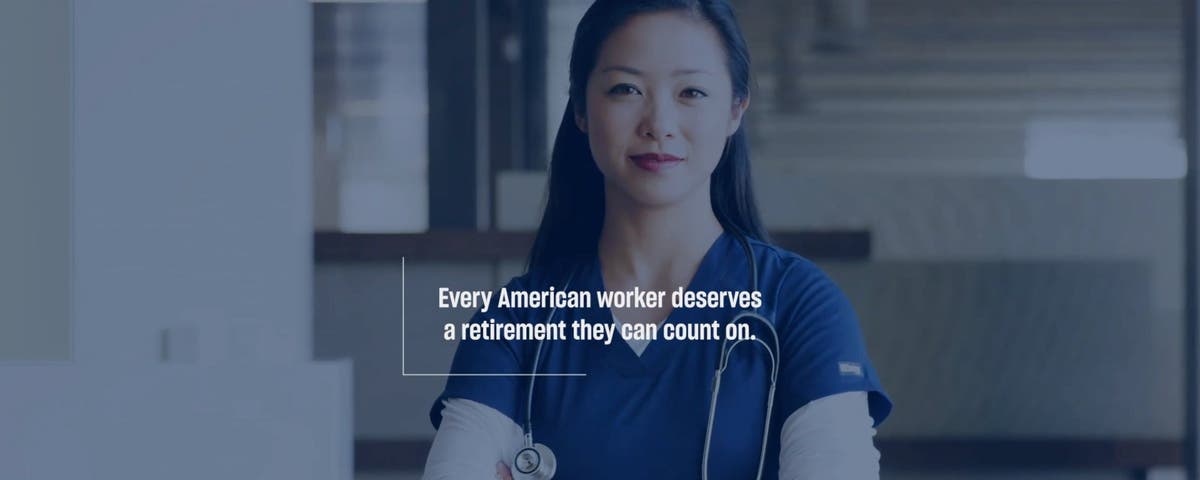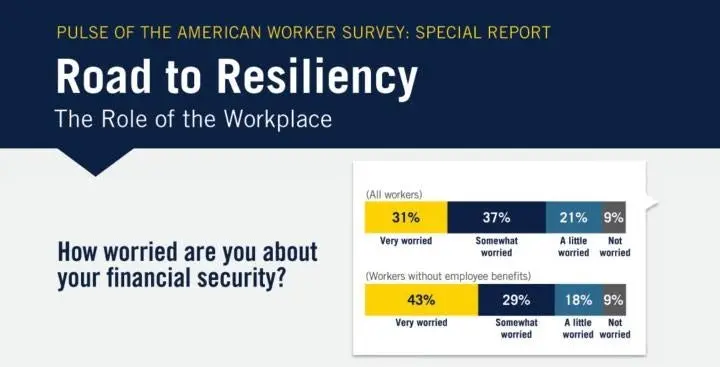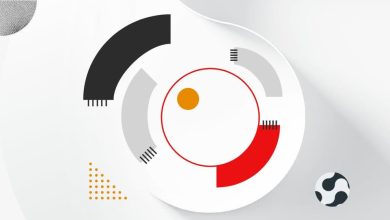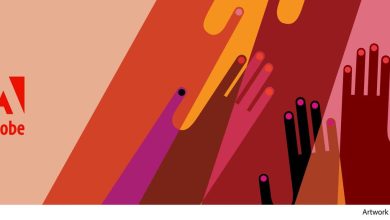Creative Cloud Pro & Adobe Stock Help Prudential Design for Audiences at Scale

As vice president, creative director at Prudential Financial, I lead the concept and design of all marketing materials that support the full end-to-end sales and engagement efforts for our U.S. Businesses. This includes everything from sales presentations to email campaigns to direct mail to web sites to social media and everything in between. My team supports the business units and their customers by delivering marketing campaigns and experiences that inspire businesses to partner with Prudential and for people to take action to create and protect their financial wellness by saving for retirement, preparing for the unexpected, and managing their day-to-day finances. As you can imagine, that’s a lot. A lot of stakeholders. A lot of deliverables (in 2020 alone we created 12,000+ marketing vehicles). A lot of details. And a lot of creativity that needs to be strategized, refined, and executed in an extremely fast and agile manner.
The reason for the high volume is that we support four completely different businesses, each with different audiences, from internal product teams to our end customers. They all have unique needs, and it’s important for each to be handled in a thoughtful manner. To be honest, I’m certain that we wouldn’t be able to create so much content without Creative Cloud Pro Edition and Adobe Stock assets.
Contents
The challenge of creating thousands of marketing assets
The significant scale of our operation means that creating original assets for each audience would be costly and difficult to achieve. For example, when we target construction workers… those on a job site in New York City, for example, may look very different in terms of attire and surroundings than workers on a job site in Colorado. This means being thoughtful when choosing the right imagery for marketing materials. It used to be easy. Just send a photographer out for a one or two day shoot. Now that our lives have changed so dramatically, with restricted travel and remote work, it’s often not feasible to capture people in their workspaces. More importantly, our tight deadlines often demand extreme speed, which often doesn’t allow time for photo shoots. To make sure we’re doing this right, we do a lot of research before we create anything — we dive deep into the diversity of our target audiences to make sure everyone feels represented. For example, we were recently inspired by the story of Judaline Cassidy, the first black woman to join the plumbers union in New York City, who went on to found an initiative called Tools & Tiaras that introduces girls to construction trades like plumbing, carpentry, and electrical. Cassidy felt she wasn’t properly reflected in the plumbing industry, and that inspired us to dive deeper and make sure everyone was represented in our materials.
Our process includes creating empathy maps, running discovery sessions and design sprints, and doing a lot of internal testing. We follow Agile principles and then take that research and present it to our business partners to support and reinforce our design decisions. Showing our strategy partners and clients what kind of visuals resonate with people (along with how we tested and got our results) makes a difference to get them on board and create the best design materials possible.
Finding visual assets on Adobe Stock at Scale and the Value of Unlimited Images
Once we’ve gathered our research and know the type of marketing materials we need to create, we use Adobe Stock to quickly search for authentic imagery among the hundreds of millions of assets, using the Find Similar feature to explore similar color schemes and find assets that are just right. To find assets that you don’t see all over the place, we apply the “Undiscovered” search filter, which shows us content matching your keyword(s) that has never been downloaded from Adobe Stock.
The combination of keywords, Find Similar, and the Undiscovered filter helps keep our final products looking unique, and reflective of the diverse customer base we’re serving. Our unlimited access to all of Adobe Stock’s standard assets through Creative Cloud Pro Edition has been a game changer for us as well. It allows us to be faster and more efficient, since our teams are no longer scared to take a chance on an image. Without worrying about their quotas, they are more willing to take creative risks by committing to an image and allowing projects to progress further down the approval chain. If that selection doesn’t work out, we can go back to the drawing board. The enterprise wide licensing also allows us to share our libraries with our business partners, giving them access to elevated content for smaller projects like their PowerPoint presentations. All of this helps ensure we’re putting out better content — more relevant and on brand.
Pre-COVID-19 it wasn’t uncommon to visit a clients’ workplace. We’d get to know the people and understand their working environment and use those experiences to inform our work. Since this is no longer possible, we ask clients to send us pictures of what their workspace looks like and who their employees are. We then drop them into Adobe Stock’s visual search, powered by Adobe Sensei — Adobe’s AI/ML technology, to find results that look similar.
While stock images help us make an initial connection with our audiences, we also use Adobe Stock to find a lot of eye-catching artwork, such as icons and illustrations, which is always helpful to break down complex financial concepts and make them more accessible.
Video is another great way to tell a story and capture someone’s attention. For many of the digital campaigns we’ve been creating, we use imagery to draw in the viewer and then lean on video and audio from Adobe Stock to enhance the experience and deliver our messages. It helps bring our campaigns to life, engage the viewer, and connect with them emotionally — whether it’s a presentation, a microsite, or a brochure. Since the pandemic began our customers and stakeholders consume more videos online and our production of video assets has gone up by around 64 percent.
Once we’ve settled on the visual assets we want to use and download them, we use Adobe Creative Cloud Libraries to keep them all in sync, and share them in Adobe Spark, which is really helpful when you’re creating marketing materials at such a scale. By adding our images and videos to Libraries, we’re able to easily keep track of which assets are used where. Not doing this results in mistakes — you could end up with the same image on two completely different brochures, which is when things can go really wrong.
Our creative process in practice: The American Worker campaign
This workflow proved especially effective for “American Worker,” a recent campaign using Adobe Stock images and videos that helps strengthen people’s financial resilience.
When the COVID-19 pandemic began, its impact went much deeper than the risk to our physical health. As markets fluctuated wildly and people lost jobs, many who were fortunate enough to have retirement accounts raided those for the money they needed to get by. It illuminated the fact that the majority of American workers were and still are worried about their financial security.
We went to market with a campaign that focused on the fact that, by partnering with Prudential, organizations can offer the type of financial solutions and workplace benefits that can prepare workers for times like these. And that’s the right thing to do. After all, these are the folks that are building our homes and teaching our children.
Creating this campaign was challenging because it really needed to hit the right tone amid one of the most challenging environments in history. It was important to find the right imagery to connect with our audiences and make them feel understood and above all that they had the power and ability to truly help their workers.
To do this, we first decided the vertical work segments we wanted to highlight. We then did empathy maps, and leveraged all of our learnings to really put ourselves in the shoes of our audience. We wanted to make sure we were producing the right campaign that would truly resonate.
The campaign was so well received that it began to take on a life of its own, branching out into all aspects of the business, which required us to create extensive brand guidelines to support a selling system that went far beyond the original intent of the campaign. This included a segment dedicated to our different verticals (taft hartly, healthcare, government and corporate), that really dove deep into who these workers are and how to properly represent them in imagery.
Democratizing access to information with digital workflows
We believe in the democratization of financial literacy and making that information accessible to everyone, internally, and externally. Our target audience is diverse and the scale of our output massive, but Adobe helps us manage it all. Adobe Stock’s powerful search and the ability to categorize content and build Creative Cloud Libraries around it have been a real unlock, especially during COVID-19, which heightened the need for diverse content and rich video experiences. This has enabled us to introduce one streamlined workflow for all of our projects, which saves us an incredible amount of time and ensures our creative team has a seat at the table from the very beginning.
Check out this recorded webinar to learn more about how Prudential creates authentic, on-brand content with Adobe Stock and Adobe Creative Cloud Pro Edition.
Source : Adobe









